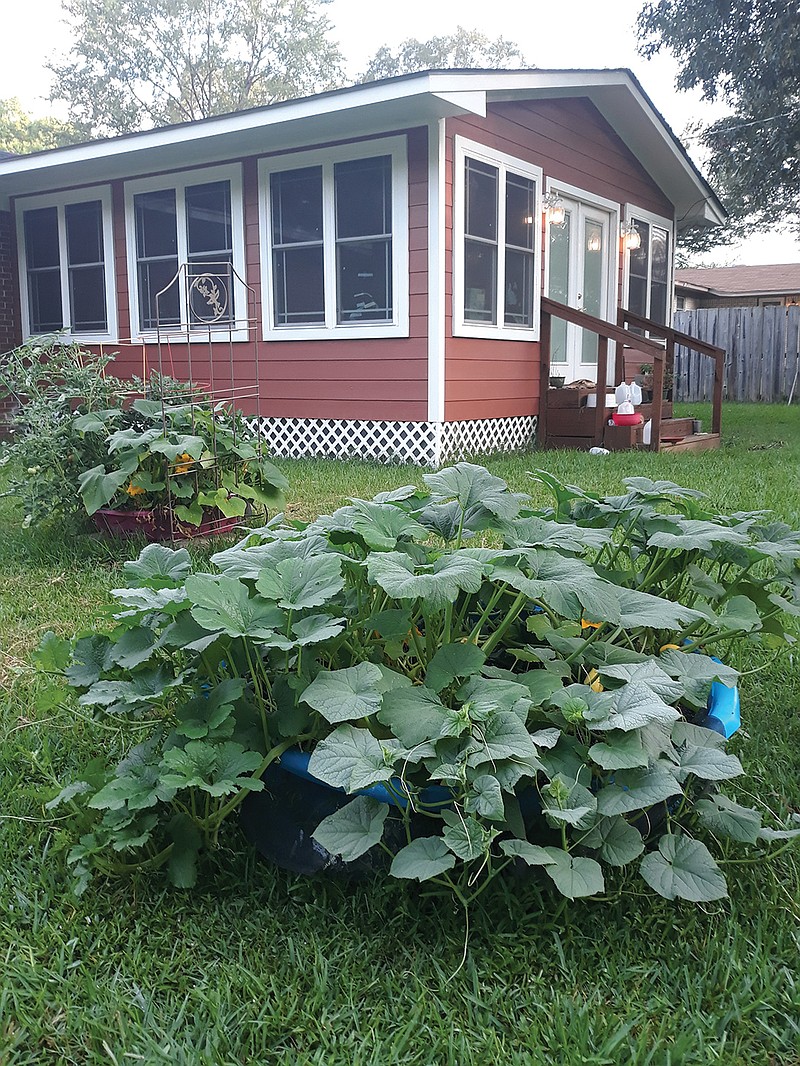My addiction/obsession began innocently enough.
You could say it was planted like a seed in my mind.
Two months into the pandemic, an idea popped into my head to deepen my country-girl roots and feel simultaneously resourceful and purposeful by gardening.
It was May and I was new, yet late, to the vegetable-planting game. I'd been around gardening most of my life, but never had done it.
My plant selection was limited. Not being an experienced gardener, I didn't give a speck of consideration about seeds at that point. After all, most seeds were already gone because others also wanted the agrarian experience in those early, uncertain pandemic days.
Three months later, my wading into gardening with a kiddie pool as my raised bed container had delivered a bumper crop.
With the summer growing season leveling off, I wanted another gardening fix.
A co-worker, friend and longtime gardener, whom I affectionately call Mother Earth, suggested growing plants from seeds for the fall season.
She's been a seed sower/grower for years,
Seeds were hard to come by in August but we managed to find a decent selection at a local store.
It was my first time to buy seeds and I chose Calabrese Broccoli, Swiss Chard and Black Seeded Simpson lettuce (though I have a really bad habit of calling it Black Bearded Simpson) and a few flowers.
I felt like a kid in a candy shop as I perused the pretty pictures on the packets showing what the end product should look like. And the sounds of the seeds sliding in the packets is always a savory sensory experience.
Planting seeds can make you bright with the possibilities of what can happen. But I was a bit of a dim bulb on my first attempt to sow seeds. The experience was sow awful. It hadn't dawned on me that I needed a specialized grow light or shop light to make those seedings shoot up.
I planted another round with correct lighting and at least had some broccoli and lettuce plants.
Mother Earth also gave me a few Dinosaur Kale and arugula transplants.
People talk about the salad days of summer, but with these the plants I had the salad days of fall. I even named the salad garden in honor of Mother Earth, calling it The Judy Garden.
Picking kale, arugula and lettuce from my backyard, as well as washing it, drying it and preparing a salad, are satisfying and gratifying acts that feed my family and my soul.
As The Judy Garden was taking off, so was my fascination with gardening.
As a result, Mother Earth and I did something we had both contemplated for years-we enrolled as Miller County Red Dirt Master Gardener trainees.
Some in the group were getting quite excited because seed catalog season was approaching. Naturally, I wanted in, so I signed up for the free seed catalogs.
For me, it hearkened back to my childhood of poring over the Sears Wish Book Christmas catalog. The tactile experience of thumbing through a catalog is so much richer than pointing and clicking a mouse.
I'm glad the catalogs arrived at different times. Each catalog was like taking a botanical excursion. The selection, variety and origination of seeds know no bounds.
By themselves, some catalogs are works of art, with Southern Exposure's resembling a Mary Engelbreit print. Baker Creek, on the other hand, is known for introducing rare seeds and its exotic photos of people from different lands standing with large-scale produce. The photos make me smile.
I love the descriptions and photos of each new variety of plant.
Many catalogs feature an introduction letter highlighting the company's challenges and successes in the past year, as well as an introduction to new varieties and products.
With the pandemic still raging, seed sales are soaring to new heights.
Mother Earth gifted me the container garden seed suite from Botanical Interests for Christmas. I added them to those I've bought from no less than four seed companies, as well as picking up at least one packet of seeds most times I am in local stores.
Admittedly, I'm a sprout (newcomer) to seed starting, but as far as seed collecting, just consider me the lady with the plastic photo-box case storing far more seeds than I can sow in one season.
Mother Earth, and every other person who makes contact with seeds, tells me having more seeds than you can plant is a normal condition.
But not to worry. Most seeds, if stored properly, are viable for up to five years.
Why are tiny seeds such a big deal in the gardening world?
For starters, the selection of seeds is endless compared to the vegetable and flower plants found in stores. New varieties of seeds are being developed and introduced every year.
Another advantage to seeds is they are quite affordable. For instance, a packet of seeds is usually priced somewhere between $2 and $4. That seed packet usually has the potential to grow anywhere from 15 or more plants. If you actually bought the plant at the store, you would likely pay $4 or more for just one plant.
Finally, growing from seeds means you know how the plant is grown and it helps you develop your sowing creds. Also, it fosters patience.
Sow some seeds and you, too, are likely to start living the seedy life, but in a wholesome, productive, way of course.
You will, however, have to get your hands dirty.

